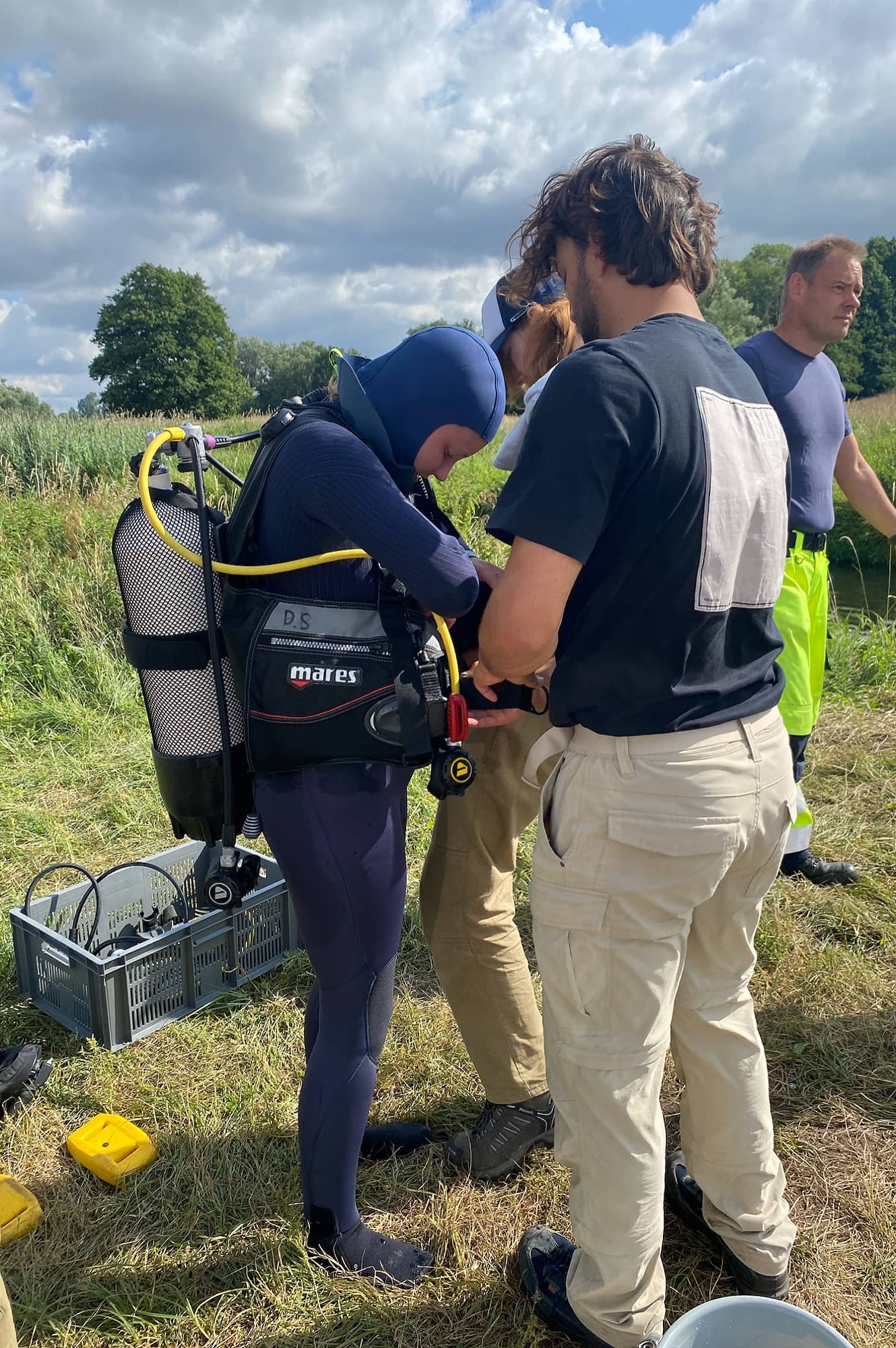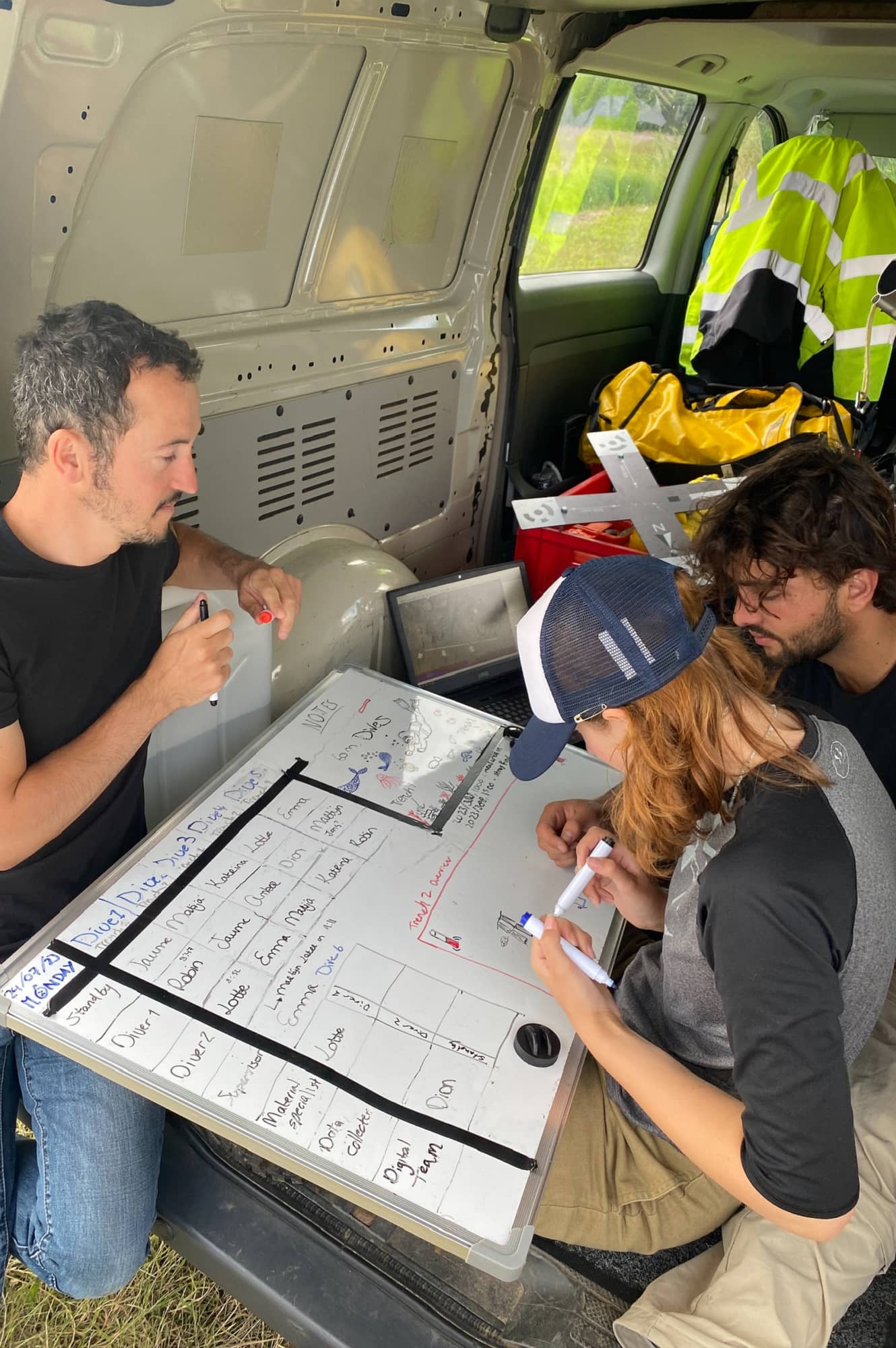During the months of July and August, students from Leiden University, Rostock University and Göttingen University research shipwrecks in the Greifswald Bay and a prehistoric site at the Tollense river in Germany. In this blog, student Emma Krijger describes the research done at the Tollense river and gaining new skills as a (maritime) archaeologist.
During the archaeological field school in the Tollense Valley (north-eastern Germany), an underwater Bronze Age battlefield site with wooden structures, human and animal remains and bronze materials was being researched by a team of students from Leiden University led by Prof. dr. Martijn Manders. A wooden structure is located at the site, consisting of planks and beams on top of each other and surrounded and supported by posts. This is the main structure that this research revolved around and has already been dated to 1300 BC by 14-C dating. With our research questions, we wanted to find out how much of the wooden structure remains in the water and possibly in the sediment near the river, what the function was of the wooden structure, and how and if the structure relates to the violent events in the Tollense valley.
Prof. dr. Martijn Manders briefing one of the students about the tasks to be done in the trench underwater
Gaining new skills
First, we have set out two trenches where our excavations took place. Our team of students was divided in two smaller teams, each team being responsible for the underwater research activities in one of the trenches. Examples of these activities are surveying the site, cleaning the profile of the river, sampling the wooden structures, metal detecting in search for bronze finds, and dredging the trench to expose the wooden structures a little bit better. This latter activity is very much needed because the visibility in the Tollense river is very bad and there is a current, so that makes the dives a little bit harder. On the other hand, this way I got familiar with a lot of new diving techniques that I find very convenient to add onto my list of skills.
You also take a diving buddy with you so that you can divide the tasks that are given by the daily supervisor. The supervisor was one of the students differing per day, so that everyone could experience the responsibilities of being in charge of a (maritime) archaeological site and the team that excavates. For me personally, being a supervisor was a heavy task, but it also provided me with a lot of insight into the different things that are part of a position like this.
Furthermore, each day someone from the team was part of the digital team. This meant that everyone did geomagnetic surveys and measured GPS points for one day in order to scan the surroundings of the river and the trench on land. Doing the geomagnetic survey has been one of the tasks I enjoyed the most so far, because processing the data can only be done at the end of the day, which makes your efforts a surprise after you are done in the field.

Students helping each other with putting on the diving gear 
The daily supervisor making a dive schedule for the day
Collaboration and team spirit
The trench on land was excavated by another team of students from Göttingen University. They were busy deepening the trench in the extension of the main wooden structure in trench 2, to find out whether the wooden structure goes on deeper into the riverbank. During excavating both trenches underwater, the finds that came above water were handled by a material specialist. Our collaboration has been very smooth and very much fun.
The British camera crew filming our activities on land and in the water
During the first week, a British camera crew was present to film our activities for documentary purposes. We also had the minister of Culture from the State of Mecklenburg-Western Pomerania visiting our site, as well as a German camera crew. This amount of engagement to our project has been very endearing and has been a unique experience for me.
At the end of each day, we returned to our accommodation, which was a zoo converted into a small holiday park. A part of the team slept in a converted goat shed, and the other half slept in tents on the terrain. This created a fun ambience to the hard work we had to do, and therefore, I am very privileged to have been part of this wonderful team of hard working students and I am very much looking forward to the results of this field school.